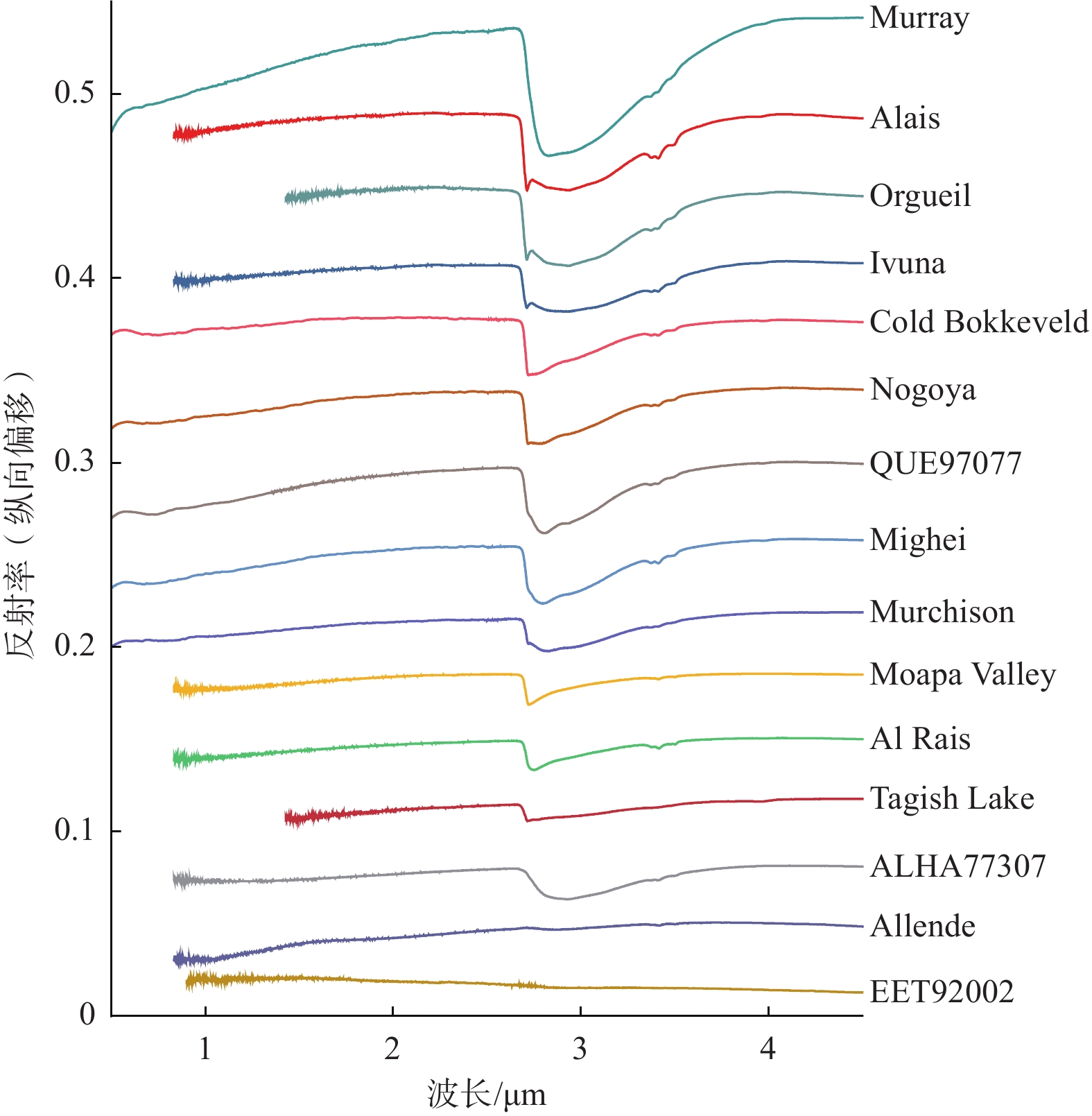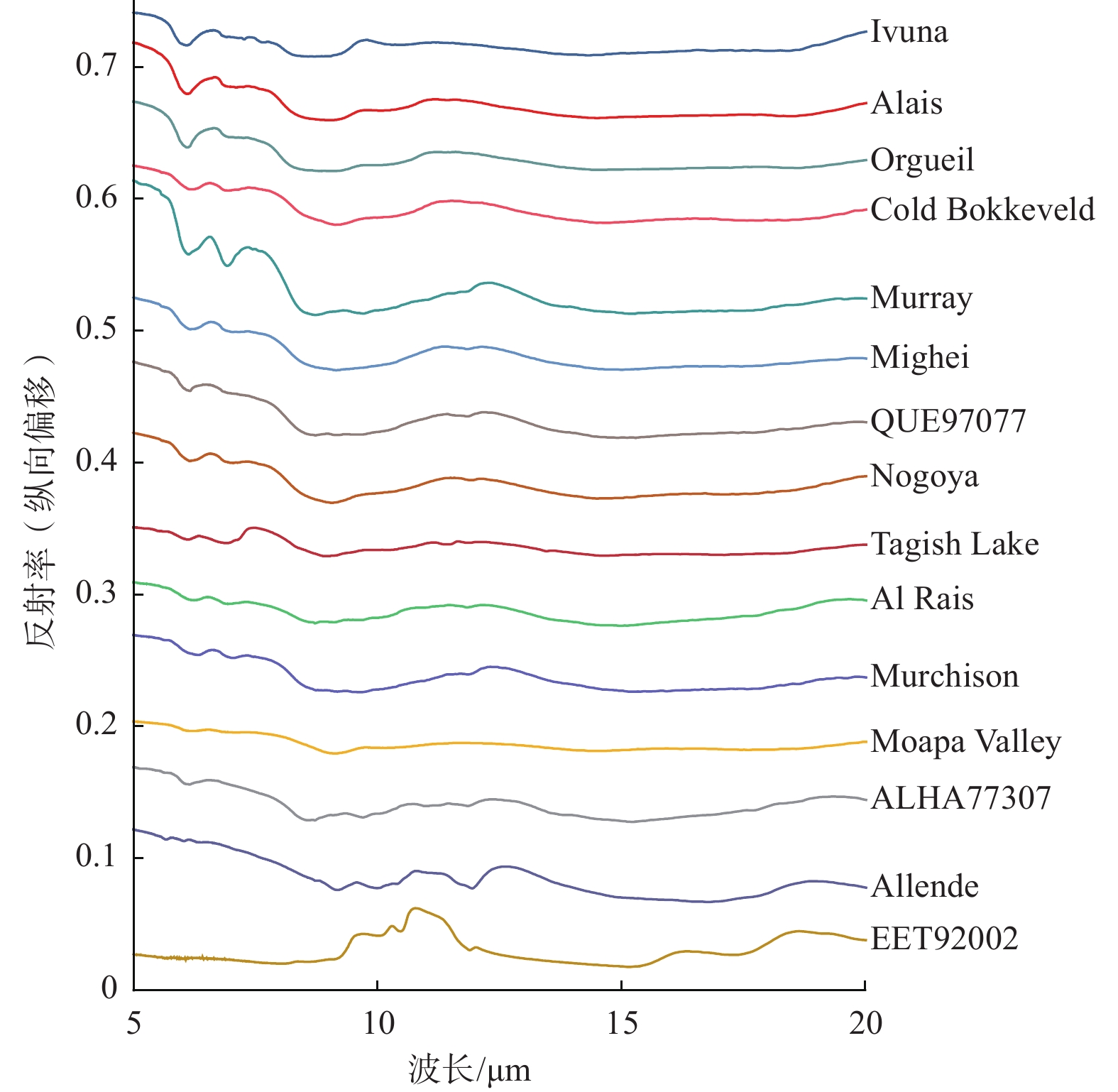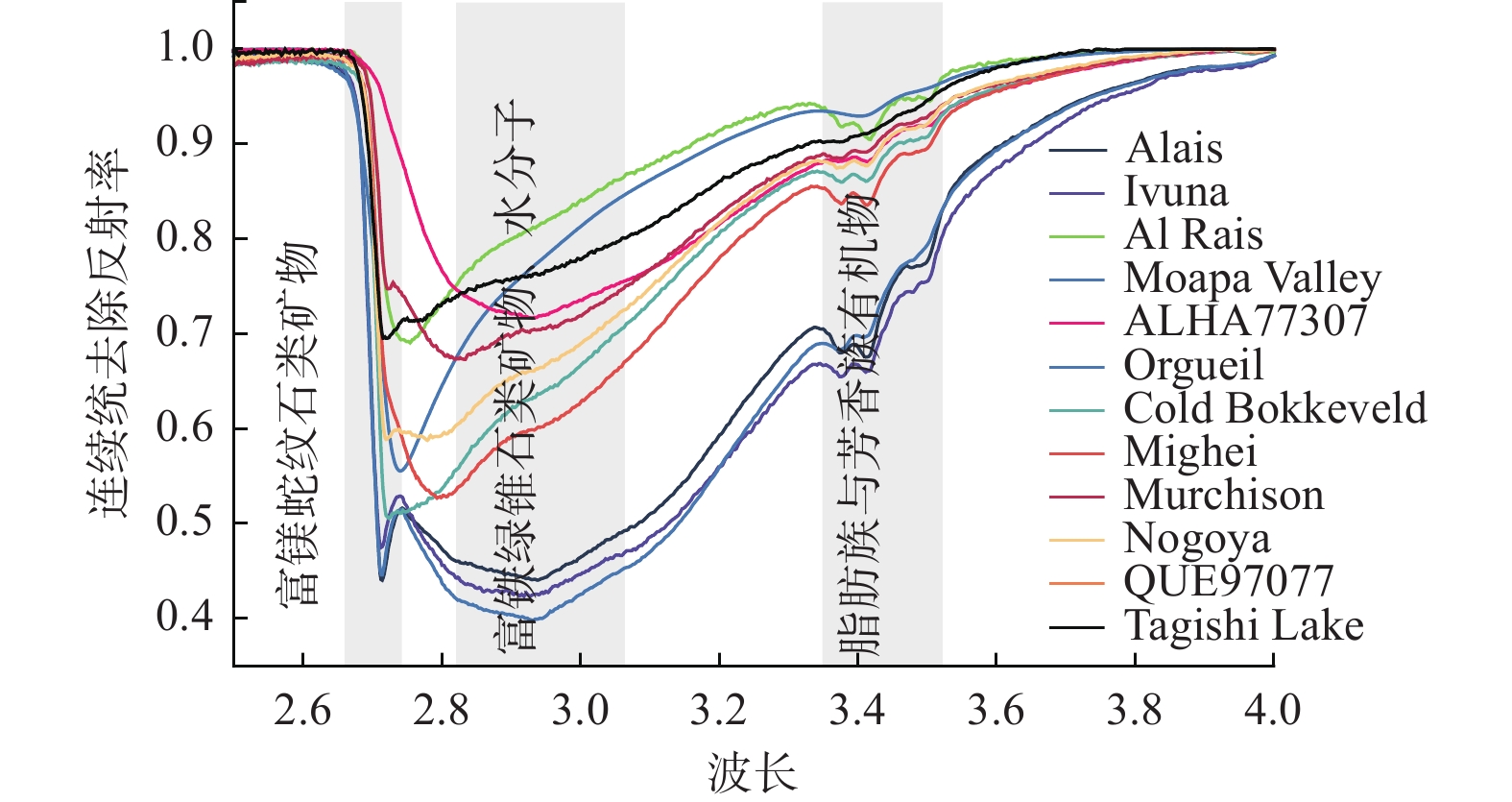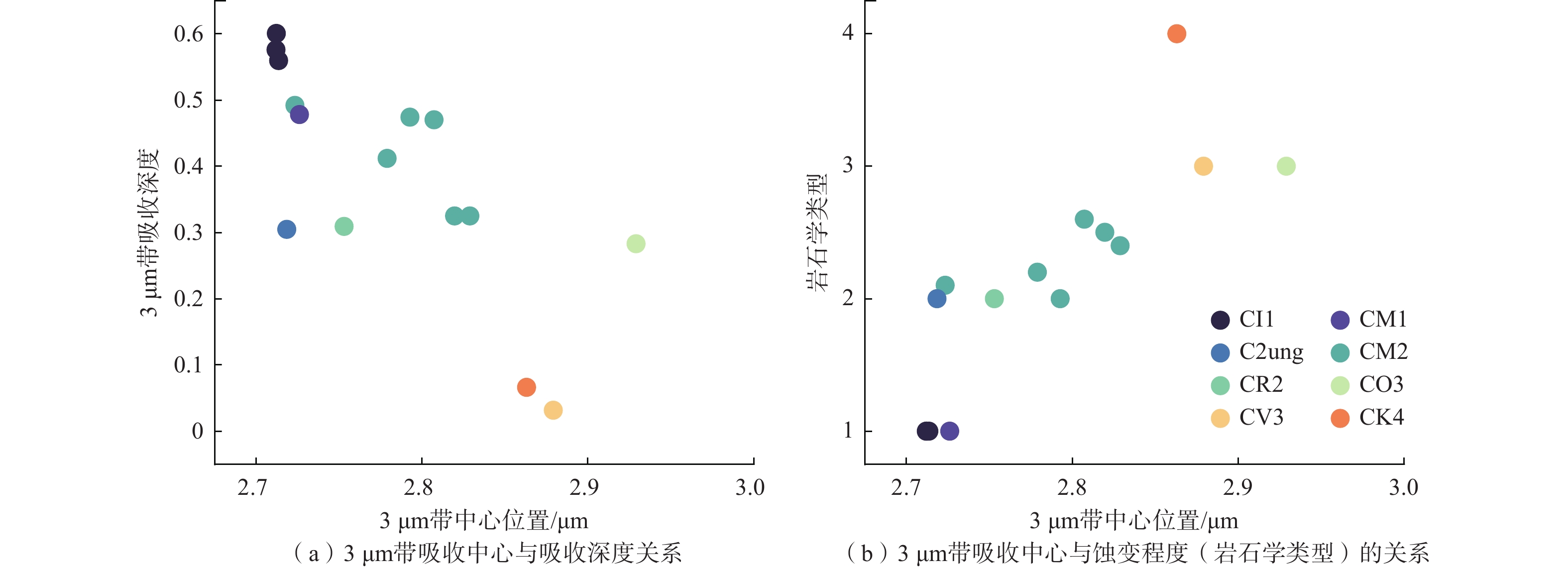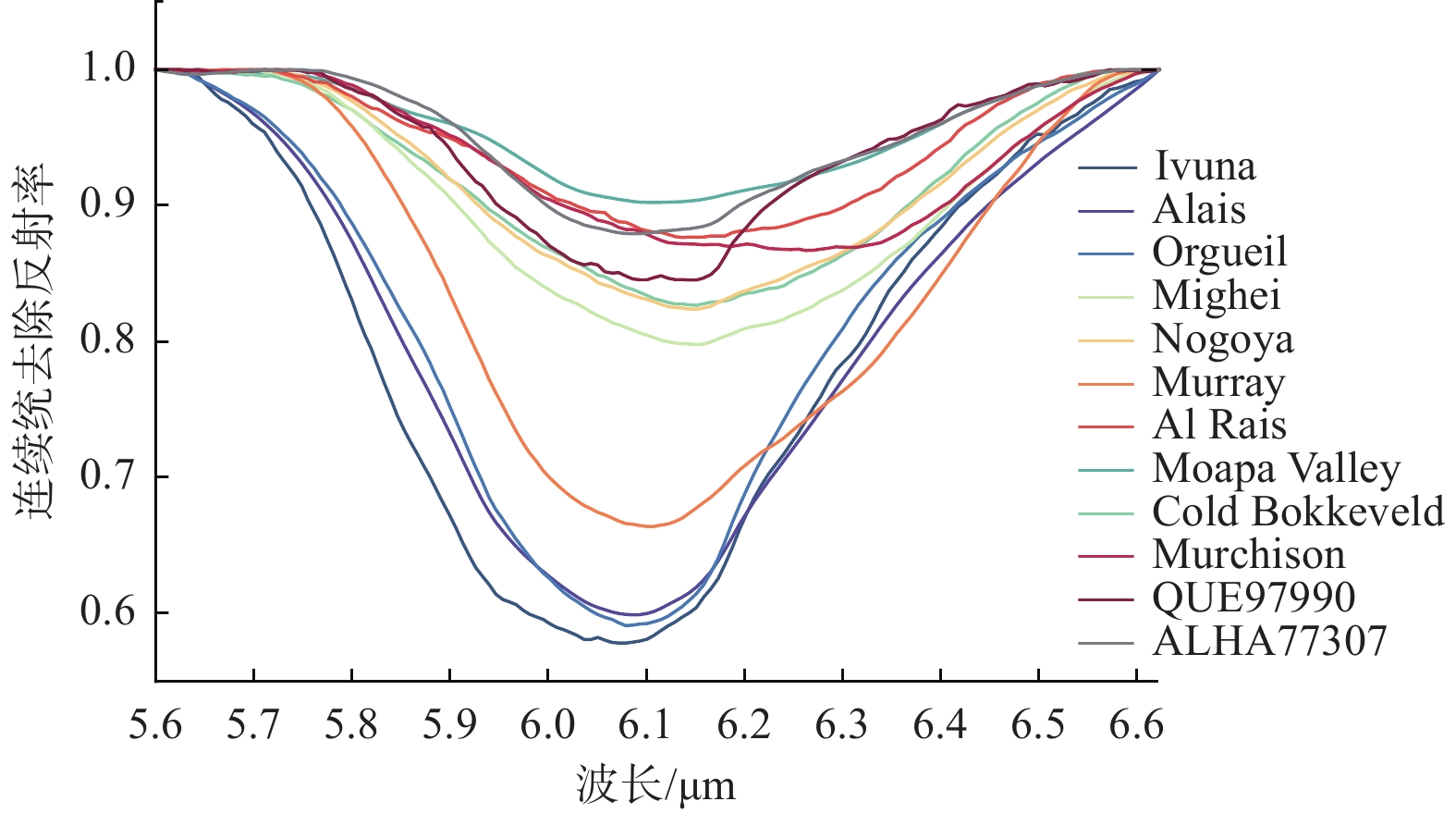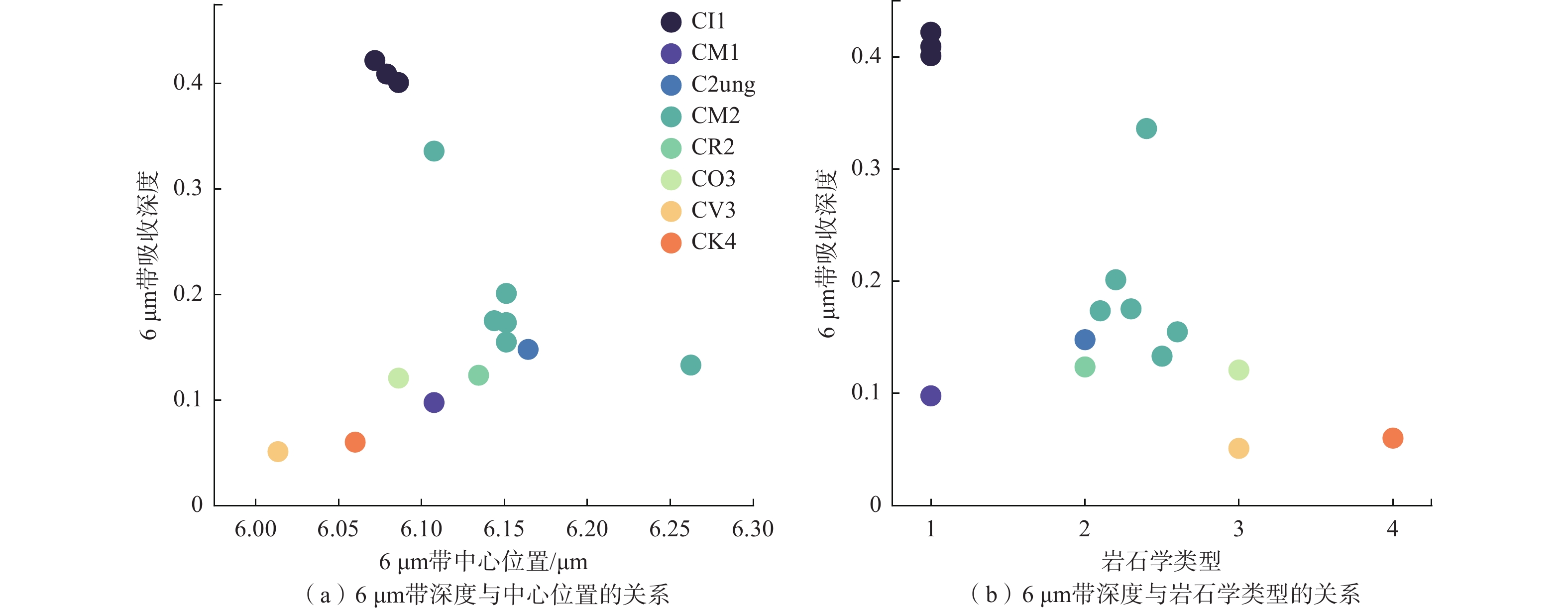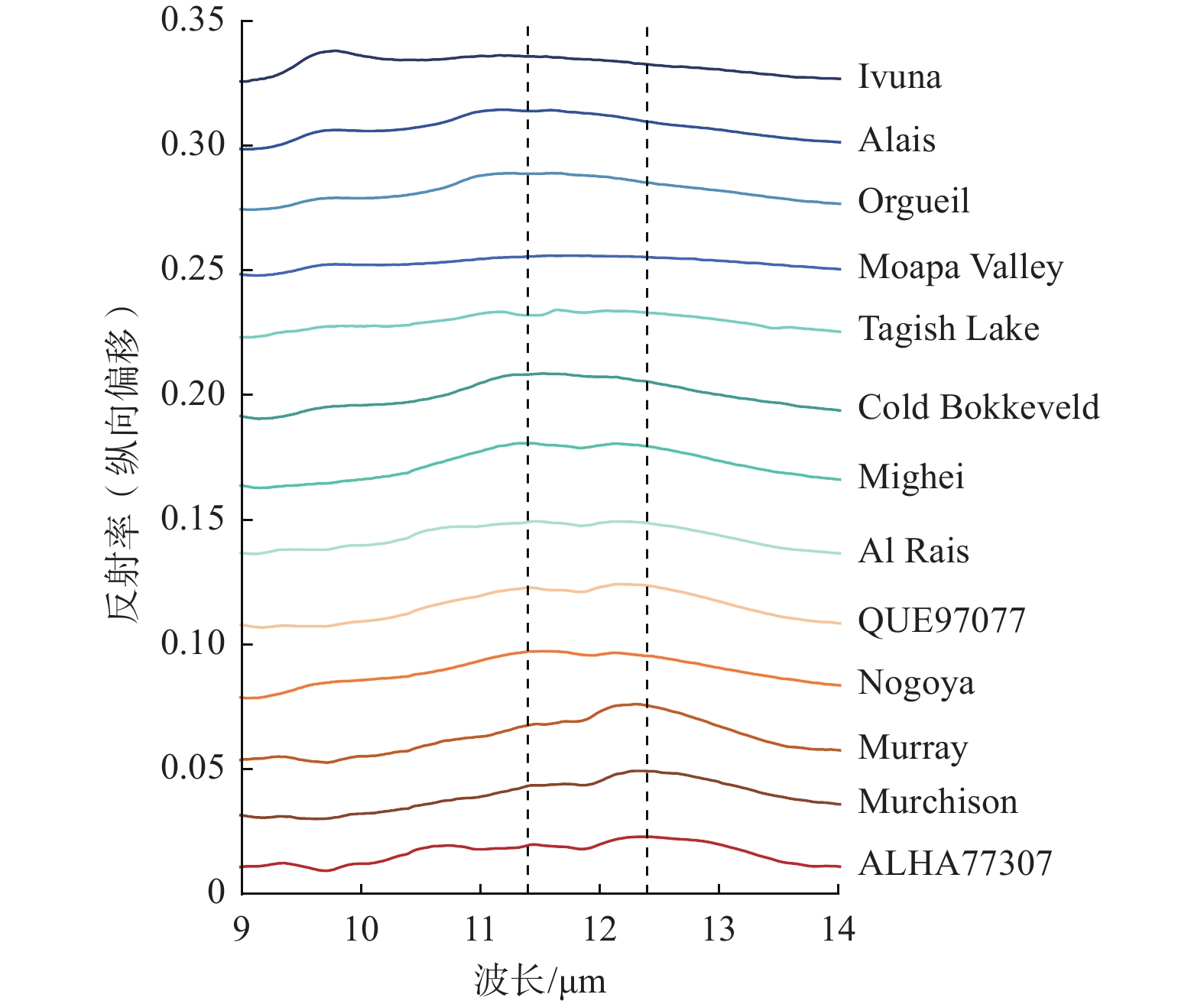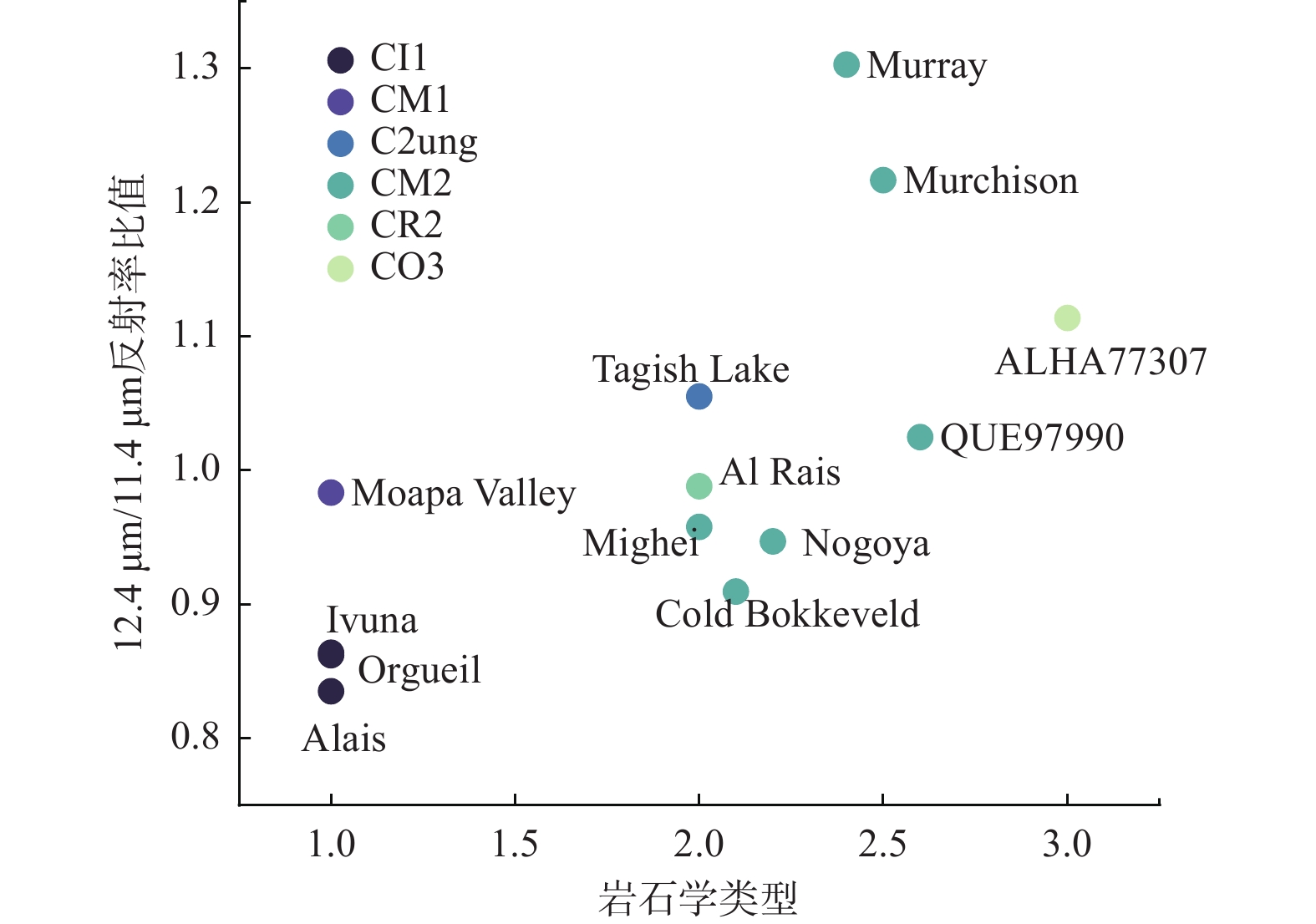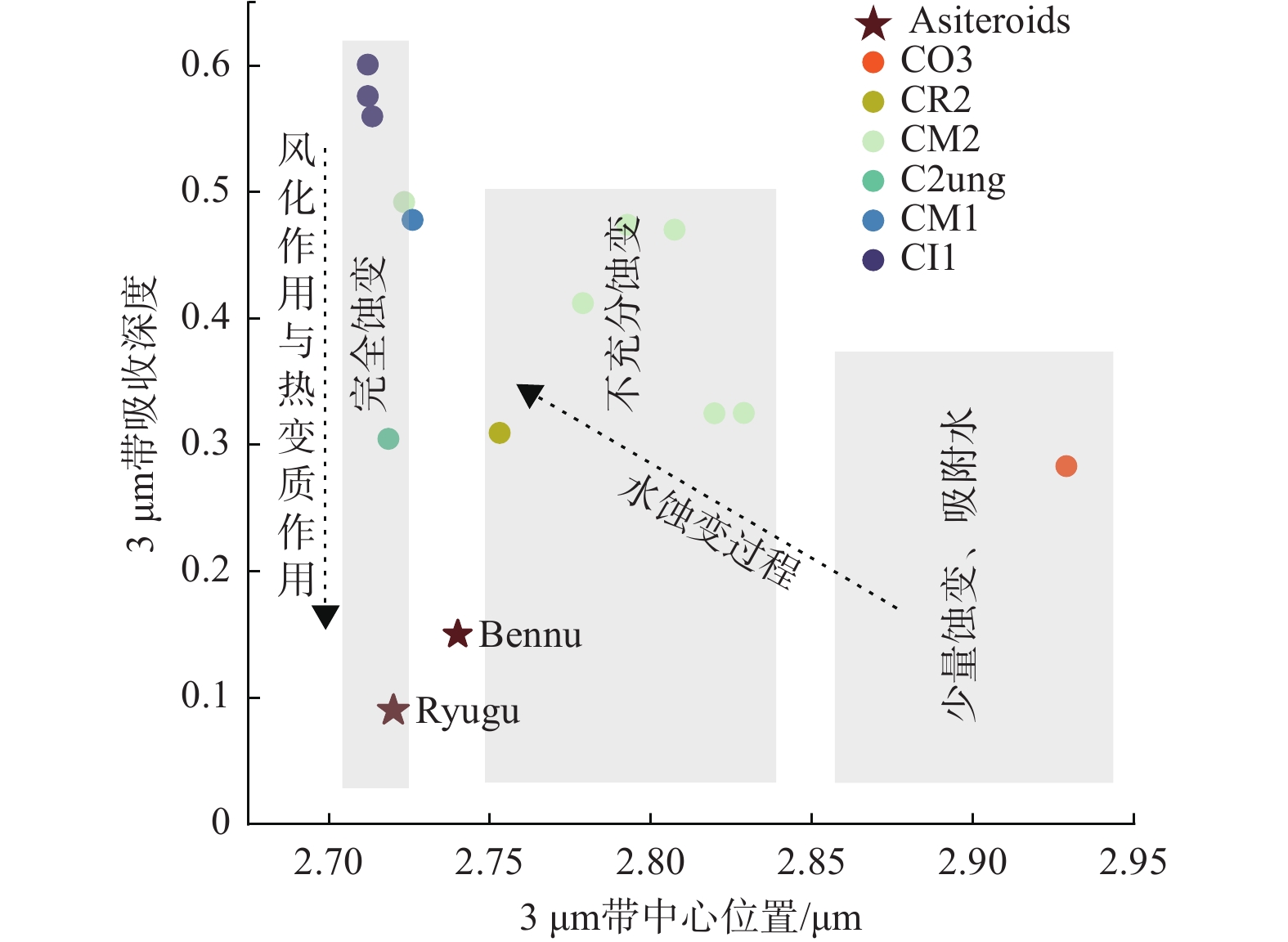| [1] |
BATES H C, KING A J, HANNA K L D, et al. Linking mineralogy and spectroscopy of highly aqueously altered CM and CI carbonaceous chondrites in preparation for primitive asteroid sample return[J]. 2020, 1(71-101): 25.
|
| [2] |
DEMEO F E,BINZEL R P,SLIVAN S M,et al. An extension of the Bus asteroid taxonomy into the near-infrared[J]. Icarus,2009,202(1):160-180.
doi:10.1016/j.icarus.2009.02.005
|
| [3] |
GEHRELS T. Asteroids III[M]. Tucson, AZ: University of Arizona Press, 2002.
|
| [4] |
AMELIN Y,KROT A N,HUTCHEON I D,et al. Lead isotopic ages of chondrules and calcium-aluminum-rich inclusions[J]. Science,2002,297(5587):1678-1683.
doi:10.1126/science.1073950
|
| [5] |
BINZEL R P, GEHRELS T, MATTHEWS M S. Asteroids II[M]//Asteroids II. 1989[2022-08-29].https: //ui.adsabs.harvard.edu/abs/1989aste.conf.....B.
|
| [6] |
ALEXANDER C M O,BOWDEN R,FOGEL M L,et al. The provenances of asteroids,and their contributions to the volatile inventories of the terrestrial planets[J]. Science,2012,337(6095):721-723.
doi:10.1126/science.1223474
|
| [7] |
BECK P. Hydrous mineralogy of CM and CI chondrites from infrared spectroscopy and their relationship with low albedo asteroids[J]. Geochimica et Cosmochimica Acta,2010,74(16):4881-4892.
doi:10.1016/j.gca.2010.05.020
|
| [8] |
TAKIR D, EMERY J P, MCSWEEN H Y, et al. Nature and degree of aqueous alteration in CM and CI carbonaceous chondrites[J/OL]. Meteoritics & Planetary Science, 2013: 48(9), 1618-1637.
|
| [9] |
BECK P,GARENNE A,QUIRICO E,et al. Transmission infrared spectra (2–25 lm) of carbonaceous chondrites (CI,CM,CV-CK,CR,C2 ungrouped): mineralogy,water,and asteroidal processes[J]. Icarus,2014,229:263-277.
doi:10.1016/j.icarus.2013.10.019
|
| [10] |
GARENNE A. Bidirectional reflectance spectroscopy of carbonaceous chondrites:Implications for water quantification and primary composition[J]. Icarus,2016,264:172-183.
doi:10.1016/j.icarus.2015.09.005
|
| [11] |
KING A J. Characterising the CI and CI-like carbonaceous chondrites using thermogravimetric analysis and infrared spectroscopy[J]. Earth,Planets and Space,2015,67:198.
|
| [12] |
RUSSELL C T,RAYMOND C A. The Dawn mission to Vesta and Ceres[J]. Space Science Reviews,2011,163(1):3-23.
|
| [13] |
LAURETTA D S,BALRAM-KNUTSON S S,BESHORE E,et al. OSIRIS-REx:sample return from Asteroid (101955) Bennu[J]. Space Science Reviews,2017,212(1):925-984.
|
| [14] |
TSUDA Y,YOSHIKAWA M,ABE M,et al. System design of the Hayabusa 2—asteroid sample return mission to 1999 JU3[J]. Acta Astronautica,2013,91:356-362.
doi:10.1016/j.actaastro.2013.06.028
|
| [15] |
LEVISON H F, OLKIN C, NOLL K S, et al. Lucy: surveying the diversity of the trojan asteroids: the fossils of planet formation[C]//48th Annual Lunar and Planetary Science Conference. The Woodlands, Texas: [s. n. ]: 2017.
|
| [16] |
BECK P. What is controlling the reflectance spectra (0.35-150 µm) of hydrated (and dehydrated) carbonaceous chondrites?[J]. Icarus,2018,313:124-138.
doi:10.1016/j.icarus.2018.05.010
|
| [17] |
GILMOUR C M, HERD C D K, BECK P. Water abundance in the Tagish Lake meteorite from TGA and IR spectroscopy: evaluation of aqueous alteration[J]. 2019, 54: 22.
|
| [18] |
CLARK R N. Detection of adsorbed water and hydroxyl on the Moon[J]. Science,2009,326(5952):562-564.
doi:10.1126/science.1178105
|
| [19] |
LI S,LUCEY P G,MILLIKEN R E,et al. Direct evidence of surface exposed water ice in the lunar polar regions[J]. Proceedings of the National Academy of Sciences of the United States of America,2018,115(36):8907-8912.
doi:10.1073/pnas.1802345115
|
| [20] |
MILLIKEN R E,MUSTARD J F. Estimating the water content of hydrated minerals using reflectance spectroscopy II. effects of particle size[J]. Icarus,2007,189(2):550-573.
doi:10.1016/j.icarus.2007.02.017
|
| [21] |
MILLIKEN R E,MUSTARD J F. Estimating the water content of hydrated minerals using reflectance spectroscopy I. effects of darkening agents and low-albedo materials[J]. Icarus,2007,189(2):550-573.
doi:10.1016/j.icarus.2007.02.017
|
| [22] |
SIMON A A, KAPLAN H H, HAMILTON V E, et al. Widespread carbon-bearing materials on near-Earth asteroid (101955) Bennu[J]. Science : 2020, 370(6517): eabc3522.
|
| [23] |
DUAN A,WU Y,CLOUTIS E A,et al. Heating of carbonaceous materials:insights into the effects of thermal metamorphism on spectral properties of carbonaceous chondrites and asteroids[J]. Meteoritics & Planetary Science,2021,56(11):2035-2046.
|
| [24] |
HONNIBALL C I. Molecular water detected on the sunlit Moon by SOFIA[J]. Nature Astronomy,2021,5(2):121-127.
doi:10.1038/s41550-020-01222-x
|
| [25] |
BATES H C,HANNA K L D,KING A J,et al. A spectral investigation of aqueously and thermally altered CM,CM‐An,and CY chondrites under simulated asteroid conditions for comparison with OSIRIS‐REx and Hayabusa2 observations[J]. Journal of Geophysical Research,2021,126(7):e2021JE006827.
|
| [26] |
RUBIN A E,TRIGO-RODRÍGUEZ J M,HUBER H,et al. Progressive aqueous alteration of CM carbonaceous chondrites[J]. Geochimica et Cosmochimica Acta,2007,71(9):2361-2382.
doi:10.1016/j.gca.2007.02.008
|
| [27] |
HOWARD K T,BENEDIX G K,BLAND P A,et al. Modal mineralogy of CM2 chondrites by X-ray diffraction (PSD-XRD). part 1:total phyllosilicate abundance and the degree of aqueous alteration[J]. Geochimica et Cosmochimica Acta,2009,73(15):4576-4589.
doi:10.1016/j.gca.2009.04.038
|
| [28] |
MILLIKEN R E, HIROI T, PATTERSON W. The NASA Reflectance Experiment Laboratory (RELAB) facility: past, present, and future[C]// 47th Annual Lunar and Planetary Science Conference. The Woodlands, Texas: NASA, 2016.
|
| [29] |
CLOUTIS E A,HUDON P,HIROI T,et al. Spectral reflectance properties of carbonaceous chondrites:2. CM chondrites[J]. Icarus,2011,216(1):309-346.
doi:10.1016/j.icarus.2011.09.009
|
| [30] |
MCADAM M M. Aqueous alteration on asteroids:Linking the mineralogy and spectroscopy of CM and CI chondrites[J]. Icarus,2015,245:320-332.
doi:10.1016/j.icarus.2014.09.041
|
| [31] |
BROWNING L B,MCSWEEN H Y,ZOLENSKY M E. Correlated alteration effects in CM carbonaceous chondrites[J]. Geochimica et Cosmochimica Acta,1996,60(14):2621-2633.
doi:10.1016/0016-7037(96)00121-4
|
| [32] |
BROWNING L,MCSWEEN JR. H Y,ZOLENSKY M E. On the origin of rim textures surrounding anhydrous silicate grains in CM carbonaceous chondrites[J]. Meteoritics & Planetary Science,2000,35(5):1015-1023.
|
| [33] |
LEBOFSKY L A. Infrared reflectance spectra of asteroids :a search for water of hydration.[J]. The Astronomical Journal,1980,85:573-585.
doi:10.1086/112714
|
| [34] |
RIVKIN A S,DAVIES J K,JOHNSON J R,et al. Hydrogen concentrations on C-class asteroids derived from remote sensing[J]. Meteoritics & Planetary Science,2003,38(9):1383-1398.
|
| [35] |
TAKIR D,EMERY J P. Outer Main Belt asteroids:Identification and distribution of four 3-μm spectral groups[J]. Icarus,2012,219(2):641-654.
doi:10.1016/j.icarus.2012.02.022
|
| [36] |
HOWELL E, RIVKIN A, SODERBERG A, et al. Aqueous alteration of asteroids: correlation of the 3 μm and 0.7 μm hydration bands[J]. 1999, 31: 1074.
|
| [37] |
CAMPINS H,HARGROVE K,PINILLA-ALONSO N,et al. Water ice and organics on the surface of the asteroid 24 Themis[J]. Nature,2010,464(7293):1320-1321.
doi:10.1038/nature09029
|
| [38] |
BECK P,QUIRICO E,SEVESTRE D,et al. Goethite as an alternative origin of the 3.1 μm band on dark asteroids[J]. Astronomy & Astrophysics,2011,526:A85.
|
| [39] |
VILAS F. A cheaper,faster,better way to detect water of hydration on solar system bodies[J]. Icarus,1994,111(2):456-467.
doi:10.1006/icar.1994.1156
|
| [40] |
KITAZATO K,MILLIKEN R E,IWATA T,et al. The surface composition of asteroid 162173 Ryugu from Hayabusa2 near-infrared spectroscopy[J]. Science,2019,364(6437):272-275.
doi:10.1126/science.aav7432
|
| [41] |
GALIANO A,PALOMBA E,D’AMORE M,et al. Characterization of the Ryugu surface by means of the variability of the near-infrared spectral slope in NIRS3 data[J]. Icarus,2020,351:113959.
doi:10.1016/j.icarus.2020.113959
|
| [42] |
KITAZATO K,MILLIKEN R E,IWATA T,et al. Thermally altered subsurface material of asteroid (162173) Ryugu[J]. Nature Astronomy,2021,5(3):246-250.
doi:10.1038/s41550-020-01271-2
|
| [43] |
HAMILTON V E,SIMON A A,CHRISTENSEN P R,et al. Evidence for widespread hydrated minerals on asteroid (101955) Bennu[J]. Nature Astronomy,2019,3(4):332-340.
doi:10.1038/s41550-019-0722-2
|
| [44] |
YOKOYAMA T, NAGASHIMA K, NAKAI I, et al. Samples returned from the asteroid Ryugu are similar to Ivuna-type carbonaceous meteorites[J]. Science, https: //www.science.org/doi/10.1126/science.abn7850.
|





 DownLoad:
DownLoad:
